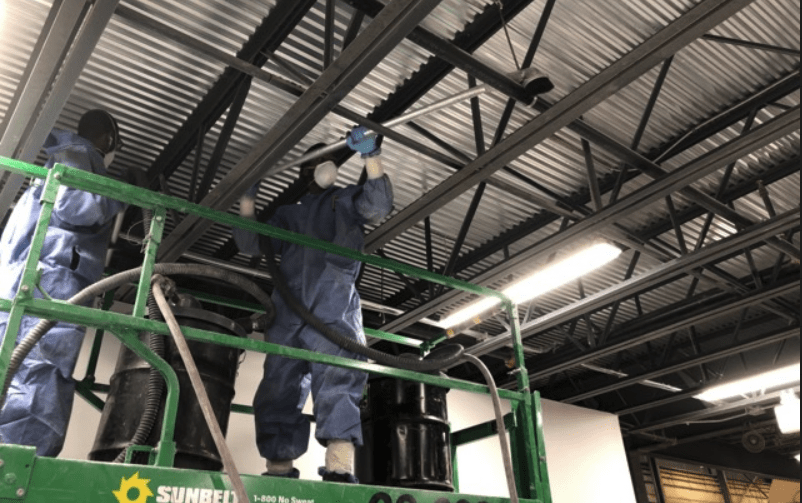What Is Combustible Dust?
Combustible dust is any type of solid, finely divided material that can become dispersed in the air and explode with exposure to an ignition source. It can take the form of powders, flakes, fibers, or even liquids or gases. In some cases, these materials are not typically combustible at all. However, when airborne particles are of a certain size or present in certain concentrations, they can burn or even explode.
Materials That Can Be a Combustible Dust Hazard
An extensive array of materials can create a hazardous environment under the right circumstances. Some of the most common combustible dust materials include:
- Agricultural products, like powdered milk, cornstarch, egg whites, flour, sugar, rice, potatoes, and grains
- Metals like aluminum, magnesium, zinc, and bronze
- Coal, sulfur, and other chemical dusts
- Pharmaceuticals
- Pesticides
- Plastics
- Textiles
- Rubber
- Wood
The Hidden Dangers of Combustible Dust
Since combustible dust accumulates discreetly and in hard-to-reach areas, it often poses a silent threat. Manufacturing facilities and other types of commercial spaces don’t always set aside time to thoroughly clean ceilings, walls, ducts, crevices, and other high surfaces. Over time, dust accumulates in these low-visibility areas, increasing the risk of fires and explosions.
Part of what makes combustible dust particularly dangerous is that even something as insignificant as static electricity can set off these particles, creating a fire. Other potential ignition sources for combustible dust include hot surfaces, friction points, sparks, and flames. In dust explosions, the heat released by burning dust can spread so rapidly that the heated air and carbon dioxide create extreme air pressure, powerful enough to blast through walls and destroy entire structures.
The Importance of Routine Cleaning
Scheduling thorough cleaning sessions at routine intervals is critically important for maintenance staff, facility managers, engineering teams, and housekeeping departments. During these cleaning sessions, any area where dust could collect unnoticed must be attended to. This includes many diverse environments, such as wood and metal shops, paint booths, lab fume hoods, and even kitchen and laundry facilities. The most important types of facilities to clean regularly are those that perform operations like:
 Abrasive blasting
Abrasive blasting
 Cutting
Cutting
 Polishing
Polishing
 Grinding
Grinding
 Crushing Materials
Crushing Materials
 Sifting Dry Ingredients
Sifting Dry Ingredients
 Processing Wet Materials
Processing Wet Materials
Your facility should be cleaned according to OSHA guidelines, using specialized, explosion-proof equipment. Depending on the type of materials present, dust can contain anything from pesticide residues, bacteria, and fungal spores to endotoxins and other dangerous debris. Properly removing combustible dust not only significantly reduces your risk of a fire, but also improves your indoor air quality. When inhaled, combustible dust can have serious negative effects on the health of the building’s occupants.
Fortunately, according to statistics from OSHA, facilities that establish safety management programs reduce their illness and injury costs by 20-40%.
Advantages of High Surface Cleaning
While many facilities already have sufficient cleaning processes in place for ground-level surfaces, it’s much harder to adequately see and clean hard-to-reach areas like:
- Ductwork
- Exposed Ceiling Rafters
- The Tops of Machinery
- Piping and Conduits
High surface cleaning targets these out-of-the-way areas and ensures that they remain free from accumulating dust and debris. This not only protects against fires and explosions but also creates a cleaner and brighter work environment.
Prioritize Safety with IMC's
Expertise in Combustible Dust
Combustible dust poses a health and safety risk whether or not it ignites. As it collects along high surfaces and neglected indoor areas, it results in a dramatic negative effect on indoor air quality and can have catastrophic consequences if ignited. Eliminating combustible dust through regular, professional cleaning is not only necessary for adhering to OSHA requirements but also for protecting your workers and assets.
At IMC, we have over 50 years of experience creating clean and safe indoor environments. We are certified NADCA Air Systems Cleaning Specialists and are highly experienced in serving food processing, chemical processing, metalworking, plastics fabrication, and other facilities. If you have questions about our combustible dust cleaning services, contact our team. To get your solution started, request a quote today.

